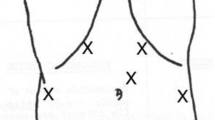Abstract
Introduction
Laparoscopic Heller myotomy is a first-line treatment for achalasia. To improve outcomes after myotomy and to determine if poor early results predict later outcomes, emergency department (ED) visits and readmissions within 60 days following laparoscopic Heller myotomy were studied.
Materials and Methods
Since 1992, 352 patients have undergone laparoscopic Heller myotomy and are followed through a prospectively maintained registry. Causes of ED visits and readmissions within 60 days after myotomy were determined. Patients scored their symptoms of achalasia before myotomy and at last follow-up; scores were compared to determine if the reasons leading to ED visits and/or readmissions impacted long-term outcome after myotomy.
Results
Fourteen (4%) patients had ED visits, and 18 (5%) patients had readmissions within 60 days following myotomy. Sixty-four percent of ED visits were for dysphagia/vomiting and 36% were for abdominal/chest pain, while 37% of readmissions were for dysphagia/vomiting. Pneumonia was complicated by empyema in four patients, all without leaks; two patients expired. Despite ED visits/readmissions, achalasia symptom (e.g., dysphagia, regurgitation, choking, heartburn, and chest pain) frequency and severity scores improved after myotomy (p < 0.05 for all).
Conclusions
ED visits and readmissions are infrequent following laparoscopic Heller myotomy. ED visits were generally due to complaints related to achalasia or edema after myotomy, while readmissions were generally related to complications of operative intervention or chronic ill health. Despite ED visits or readmissions early after myotomy, symptoms of achalasia are well palliated by myotomy long-term.






Similar content being viewed by others
References
Kahrilas PJ, Pandolfino JE. Motility disorders of the esophagus. In Yamada T et al, ed. Textbook of gastroenterology, 4th ed. Philadelphia: Lippincott, Williams, and Wilkins, 2003.
Pasricha PJ, Ravich WJ, Hendrix TR et al. Intrasphincteric injection of botulinum toxin for the treatment of achalasia. N Engl J Med 1995;322:774–778. doi:10.1056/NEJM199503233321203.
Parkman HP, Reynolds JC, Ouyang A et al. Pneumatic dilatation or esophagomyotomy treatment for idiopathic achalasia: clinical outcomes and cost analysis. Dig Dis Sci 1993;38:75–85. doi:10.1007/BF01296777.
Lyass D, Thoman J, Steiner P et al. Current status of an antireflux procedure in laparoscopic Heller myotomy. Surg Endosc 2003;17:554–558. doi:10.1007/s00464-002-8604-5.
Ramacciato G, Mercantini P, Amodio PM et al. Minimally invasive surgical treatment of esophageal achalasia. JSLS 2003;7:219–225.
Ponce M, Oritz V, Juan M et al. Gastroesophageal reflux, quality of life, and satisfaction in patients with achalasia treated by open cardiomyotomy and partial fundoplication. Am J Surg 2003;185:560–564. doi:10.1016/S0002-9610(03)00076-X.
Bloomston M, Brady P, Rosemurgy A. Videoscopic Heller myotomy with intraoperative endoscopy promotes optimal outcomes. JSLS 2002;6:133–138.
Sharp K, Khaitan L, Schotz S et al. 100 Consecutive minimally invasive Heller myotomies: lessons learned. Ann Surg 2002;235:631–639. doi:10.1097/00000658-200205000-00004.
Finley R, Clifton J, Stewart K et al. Laparoscopic Heller myotomy improves esophageal emptying and the symptoms of achalasia. Arch Surg 2001;136:892–896. doi:10.1001/archsurg.136.8.892.
Bloomston M, Serafini F, Rosemurgy A. Videoscopic Heller myotomy as first-line therapy for severe achalasia. Am Surg 2001;67:1105–1109.
Zaninotto G, Costantini M, Molena D et al. Minimally invasive surgery for esophageal achalasia. J Laparoendosc Adv Surg Tech A 2001;11:351–359. doi:10.1089/10926420152761860.
Patti MG, Fisichella PM, Perretta S et al. Impact of minimally invasive surgery on the treatment of esophageal achalasia: a decade of change. J Am Coll Surg 2003;196:698–705. doi:10.1016/S1072-7515(02)01837-9.
Spiess AE, Kahrilas PJ. Treating achalasia: from whalebone to laparoscope. JAMA 1998;280:638–642. doi:10.1001/jama.280.7.638.
Rosemurgy A, Villadolid D, Thometz D, Kalipersad C, Rakita S, Albrink M et al. Laparoscopic Heller myotomy provides durable relief from achalasia and salvages failures after botox or dilation. Ann Surg 2005;241:725–733. doi:10.1097/01.sla.0000160702.31452.d5.
Rakita S, Bloomston M, Villadolid D, Thometz D, Boe B, Rosemurgy A. Age affects presenting symptoms of achalasia and outcomes after myotomy. Am Surg 2005;71:424–429.
Bloomston M, Serafini F, Boyce HW et al. The “learning curve” in videoscopic Heller myotomy. JSLS 2002;6:41–47.
Bloomston M, Boyce W, Mamel J et al. Videoscopic Heller myotomy for achalasia: results beyond short term follow-up. J Surg Res 2000;92:150–156. doi:10.1006/jsre.2000.5886.
Richards W, Torquati A, Holzman M et al. Heller myotomy versus Heller myotomy with Dor fundoplication for achalasia. Ann Surg 2004;240:405–412. doi:10.1097/01.sla.0000136940.32255.51.
Bloomston M, Durkin A, Boyce HW, Johnson M, Rosemurgy AS. Early results of laparoscopic Heller myotomy do not necessarily predict long-term outcome. Am J Surg 2004;187:403–407. doi:10.1016/j.amjsurg.2003.12.003.
Rakita S, Villadolid D, Kalipersad C, Thometz D, Rosemurgy A. Outcomes promote reoperative Heller myotomy for symptoms of achalasia. Surg Endosc 2007;10:1709–1714. doi:10.1007/s00464-007-9226-8.
Author information
Authors and Affiliations
Corresponding author
Rights and permissions
About this article
Cite this article
Ross, S., Villadolid, D., Al-Saadi, S. et al. After Laparoscopic Heller Myotomy, Do Emergency Department Visits or Readmissions Predict Poor Long-Term Outcomes?. J Gastrointest Surg 12, 2125–2132 (2008). https://doi.org/10.1007/s11605-008-0707-4
Received:
Accepted:
Published:
Issue Date:
DOI: https://doi.org/10.1007/s11605-008-0707-4




